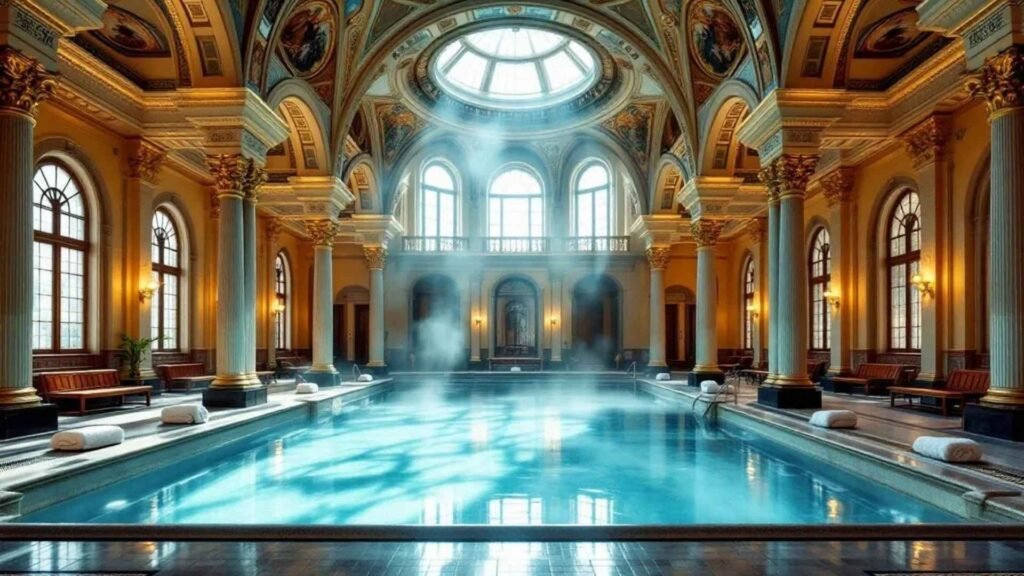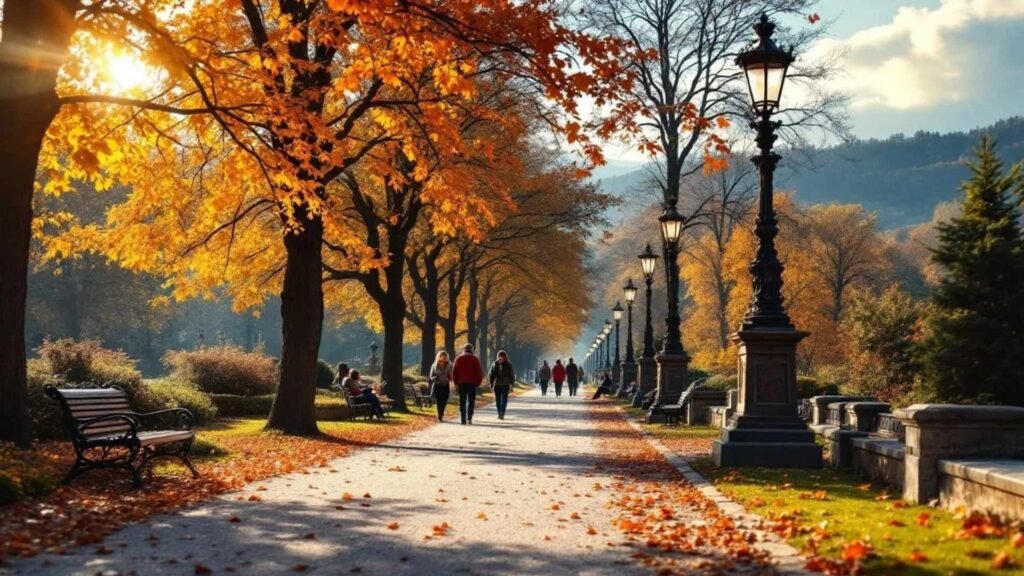Tucked into the gentle foothills of the Black Forest (Schwarzwald), Baden-Baden is more than just a spa town—it is a destination where history, wellness, and luxury have been intertwined for over two millennia. Known for its mineral-rich thermal waters, the city has attracted Roman soldiers, European aristocrats, and modern wellness seekers alike.
Today, it offers a rare combination: ancient therapeutic traditions preserved alongside cutting-edge spa technology, wrapped in an atmosphere of elegance and cultural refinement.
A Journey Through Time: From Ancient Rome to European Royalty
The story of Baden-Baden begins with the Romans, who named it Aquae Aureliae. They recognized the healing qualities of its hot springs and built elaborate bathhouses here as early as the 1st century AD. Roman legionnaires would soak in the mineral waters after long campaigns, easing fatigue and treating battle injuries. Visitors can still explore the remains of these ancient baths beneath the modern city, a testament to their enduring significance.
Centuries later, in the 19th century Belle Époque, Baden-Baden became Europe’s most fashionable health retreat. The elite of Paris, Vienna, and St. Petersburg came to “take the waters” and indulge in the social scene. The town’s grand casino, luxury hotels, and ornate theater attracted royalty, aristocrats, artists, and writers—among them Dostoevsky, who famously completed part of The Gambler here. The combination of therapeutic waters and sophisticated leisure made Baden-Baden a cultural hotspot unlike any other.
The Healing Power Beneath the Surface

Baden-Baden’s springs bubble up from depths of up to 2,000 meters, heated naturally to temperatures as high as 68°C. This water is infused with a rich blend of minerals—sodium, potassium, calcium, magnesium, and lithium—that have been celebrated for centuries for their health benefits:
- Musculoskeletal relief – easing arthritis, muscle tension, and joint pain
- Circulatory benefits – improving blood flow and cardiovascular health
- Stress reduction – calming the nervous system and promoting better sleep
Medical studies continue to validate these effects, making Baden-Baden a bridge between traditional hydrotherapy and modern medical wellness.
Spa Landmarks and Experiences

1. Friedrichsbad – Opened in 1877, Friedrichsbad offers a 17-step bathing ritual combining Roman and Irish traditions. Visitors move through a sequence of warm-air rooms, steam baths, mineral-water pools, and relaxation areas. The ornate interior—with its domed ceilings and frescoes—creates an atmosphere where time seems to slow.
2. Caracalla Therme – For a more contemporary setting, Caracalla Therme features expansive indoor and outdoor pools, saunas, and whirlpools surrounded by lush parkland. Large glass walls frame views of the Black Forest, and the scent of essential oils in the sauna area enhances the sense of relaxation.
3. Private Luxury Wellness Suites – Many five-star hotels in Baden-Baden offer private spa suites with personalized therapies, such as mineral-water jacuzzis, aromatherapy steam rooms, and couples’ massage rituals. Here, the experience becomes entirely bespoke.
Beyond the Spa: Culture, Nature, and Fine Living

A stay in Baden-Baden can be as active or as leisurely as you choose. Between spa sessions, visitors often stroll the Lichtentaler Allee, a leafy 2.3-kilometer parkway lined with sculptures and gardens, or explore the Kunsthalle and Museum Frieder Burda, both renowned for their art collections.
Food lovers can indulge in Black Forest cuisine, where hearty game dishes meet refined French-inspired gastronomy. Michelin-starred restaurants, elegant wine bars, and traditional cafés ensure that wellness here extends to the palate.
For those drawn to nightlife, Baden-Baden’s casino—described by Marlene Dietrich as “the most beautiful casino in the world”—offers a glamorous way to end the evening, echoing the grandeur of its 19th-century heyday.
The Modern Face of Health Tourism
While Baden-Baden honors its past, it continues to innovate in the world of wellness tourism. The city has embraced integrative health programs, blending traditional thermal therapies with modern diagnostics, physiotherapy, detox regimes, and even aesthetic medicine. Clinics work alongside spa facilities to create comprehensive treatment plans for international guests seeking not just relaxation, but lasting health improvements.
This unique combination of medical expertise, natural resources, and luxurious hospitality places Baden-Baden at the forefront of global wellness destinations.
Conclusion
Baden-Baden is more than a place—it is an experience shaped by centuries of healing, culture, and refinement. Its steaming mineral waters, historic bathhouses, elegant hotels, and lush landscapes create a setting where the body is restored, the mind is calmed, and the soul is nourished.
For travelers seeking a destination that offers both timeless tradition and modern luxury, Baden-Baden remains the ultimate European spa capital.

